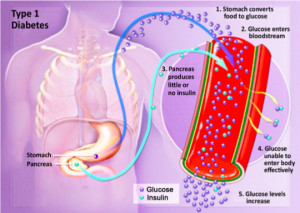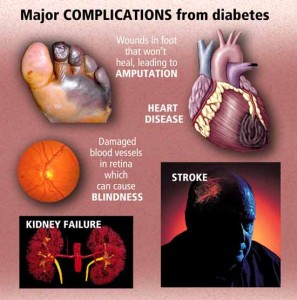Shopping addiction actually has a technical term that is called Omniomania. This means compulsive shopping and is perhaps the most socially reinforced of the behavioral addictions. Shopping addiction is characterized by the widespread desire to shop and purchase items despite a need for such items or despite a necessary ability to afford such items. Consumerism is one of the biggest measures of social elite in America and this makes shopping addiction an even more widespread problem for many.
Shopaholics, also known as compulsive shoppers or shopping addicts, may actually be suffering from a psychiatric disorder known as compulsive buying disorder.
Compulsive buying disorder (CBD) sufferers have a sense of excitement before a purchase, an inability to resist the urge to shop and a rush or sense of reward while spending, despite any negative consequences of their actions. CBD is considered an impulse-control disorder. Just as with other impulse-control disorders such as drug and alcohol addiction and pathological gambling, for many compulsive shoppers the “high”of the spending spree is followed by a low, where the powerful euphoric feelings are replaced with those of distress, shame and guilt.
Shopping addiction is not a newfound disorder. It has affected millions of people for many years and dates back to as early as the 19th century. Friends and family members go out and shop together, people shop socially, people shop for something to do and people shop to fulfill negative emotions. An addiction to shopping leads to compulsive shopping that can result in many negative feelings. According to the US National Library of Medicine, over 5% of Americans are affected by compulsive buying disorder.
While some of us may enjoy the thrill of an occasional splurge or scoring a good deal, spending more than you bargained for during an annual holiday shopping spree doesn’t automatically make you a shopaholic. But that thrill, what some shopaholics describe as a high, helps drive compulsive shoppers to want more — excessive shopping, uncontrolled spending sprees and impulse buys are the defining characteristics of compulsive buying disorder.
People who suffer from compulsive buying disorder may also have feelings of anxiety or tension while they try to resist the urge to shop. And unlike those who compulsively shop without regret during the manic periods of bipolar disorder, CBD sufferers often feel depressed or distressed for having given in to the urge and guilty over their growing debts after they’ve gone on a spree. But it can be those very feelings of distress, shame and depression that ignite the shopping addict to again seek the “high” that comes along with shopping, despite any negative consequences of their actions.
The average American has about three credit cards and knows how to use them — on average, a cardholder owes almost $16,000 on their plastic [source: Woolsey]. Compulsive shoppers have, on average, the same number of cards as the rest of us but the difference is that they’re more likely to maintain balances between $100 to $500 shy of each card’s maximum limit [source: Koran]. They shop excessively and impulsively, typically making their purchases on credit.
What’s excessive? Treating yourself to that pair of luxurious new boots you’ve had your eye on may feel excessive and unnecessary, especially if you’re on a tight budget, but compulsive shoppers might buy five, 10 or even 20 pairs of those boots without hesitation. Some shopaholics shop for the thrill of the purchase no matter what the item is. Others may have specific shopping preferences — consider the 2,000 to 3,000 pairs of shoes former first lady of the Philippines Imelda Marcos had collected, for example.
Any debt you can’t (or don’t) pay off quickly is too much debt. While the amount of debt you carry is ultimately going to be a personal decision, there’s a quick way to know for sure how your monthly financial obligations stack up against your monthly income. Add up your monthly debt obligations — that’s your rent or mortgage, your credit card, car loan, student loan and any other loan payments (this does not include what you pay for food, clothing, utilities or your discretionary spending). Add up your monthly income — that’s your gross salary plus any other income such as a bonus or alimony. If less than 30 percent of your income is used to pay your debts, you’re in pretty good shape at the moment. When the ratio begins to creep towards 40 percent or greater, though, it’s time for a financial intervention.
Do you think about shopping every day? Do you shop for yourself every day or every week? Do you understand why you shop – what drives it, what triggers it, and what consequences it has (could you write those things down or cogently describe them to someone else)? Do you ever feel bad (guilty, ashamed, fearful) after a shopping trip? Do you ever feel weirdly ‘up’ after a shopping trip (triumphant, exultant, complete)? Does shopping fill a lot of your time, thoughts and creative energy? Does shopping take a large portion of your disposable income? Is your relationship to shopping one of your most important? Do you have significant credit card debt, racked up on clothing, shoes and accessories purchases? Are you on a first name basis with the sales people of your favourite stores, you shop there so much? Do you have the phone numbers of your favourite stores on speed dial? Is the thought of not going shopping for any period of time (a month, 6 months, a year) cause you to feel light-headed, heavy-hearted or short-of-breath with the sheer mortification of it? Who’s the boss – shopping or you?
If you say yes to a lot of these questions or just know shopping is the boss than you have a shopping problem and it’s up to you only to make the choice in making this shopaholic habits be put to rest and allow you to control your own life not shopping control you. Good luck if you have or now know you have a problem.
How do you resolve it control it yourself or go to a doctor or psychologist or psychiatrist or even a specialist who majors in counseling people with this problem.





